The best movie twists of the 2010s
A poorly executed plot twist can ruin an otherwise good movie. But on the flip side, there’s nothing more satisfying than a twist done right.
As the decade draws to a close, EW has rounded up the best twists in films that came out between 2010 and 2019. For our purposes, a good twist is defined as more than just a surprise (although bonus points are awarded if no one saw it coming); it had to be something that changed our understanding of the film for the better. Essentially, the twist felt earned, not cheap. In the case of movies adapted from books, if the reveal worked as well as it did in the source material (or better), it counts. Hey, a good twist is a good twist!
Read on to see which films of the last decade made the cut, but be warned: There are major spoilers ahead.
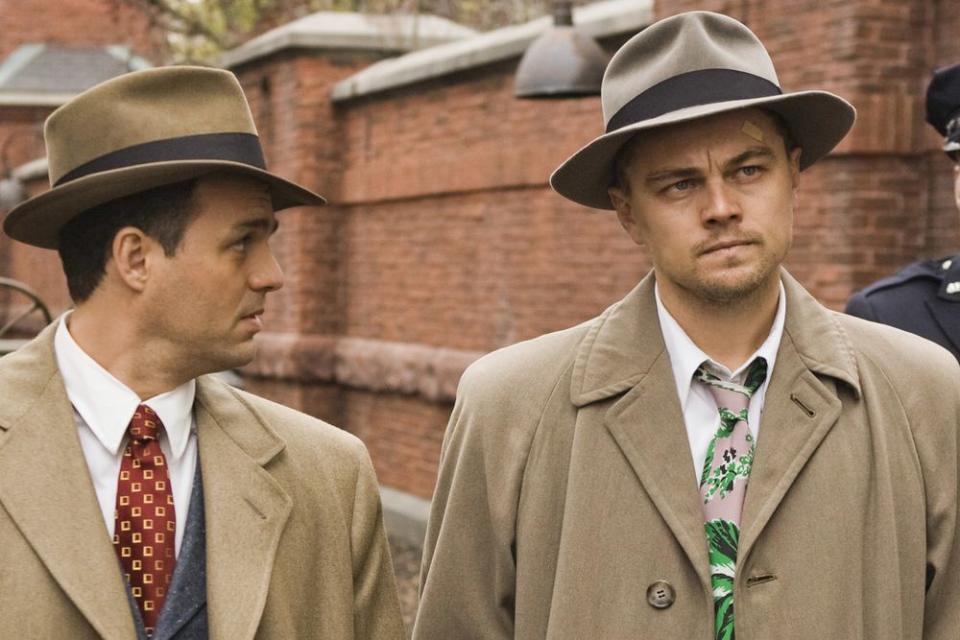
Shutter Island (2010)
In this Martin Scorsese-helmed film based on the Dennis Lehane novel, Leonardo DiCaprio plays U.S. Marshal Edward “Teddy” Daniels, who is sent to a psychiatric facility on the titular island to investigate when a patient at Ashecliffe Hospital named Rachel Solando goes missing. Along the way he’s helped by his partner, Chuck Aule (Mark Ruffalo), but he’s plagued by migraines and dreams of a little girl and his wife, Dolores Chanal (Michelle Williams), who was killed in a fire set by someone named Andrew Laeddis. The search for Solando becomes darker, weirder, and more paranoid as the film goes on, until it’s all revealed to be a ruse. Daniels is actually Laeddis (their names are perfect anagrams of each other), and he’s a patient at Ashecliffe, and has been ever since he murdered his wife after she murdered their children (remember that little girl from his dreams?). The “case” was designed by the hospital staff (including “Chuck” and one of the nurses who posed as Rachel) to break him of his delusions, and we’re forced to work our way backward in the film and realize that all the signs were there all along, from the names to the threats to the clues.
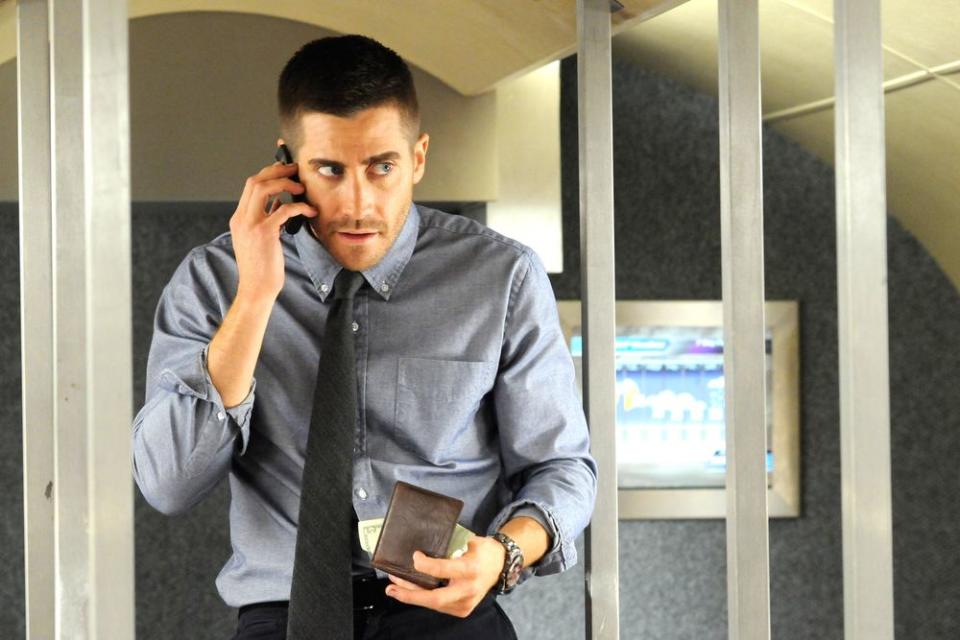
Source Code (2011)
Source Code starts simple enough: U.S. Army pilot Captain Colter Stevens (Jake Gyllenhaal) awakens on a train, which explodes shortly thereafter. When he wakes up a second time, he’s told by Captain Colleen Goodwin (Vera Farmiga) that his mission is to find the bomber of the train. He later learns that he is part of a simulation known as Source Code, which uses the dead bombing victims’ residual memories of eight minutes before their deaths to create a simulated environment, and this is why he only gets eight minutes each time to find the bomber. The first twist comes when Stevens learns that he was actually reported as killed in action in Afghanistan two months ago, and that he is currently on life support. The final (and best) twist comes when he has successfully identified the bomber. In exchange, Goodwin sends him back into the simulation one last time so she can take him off life support after eight minutes, which she does. But, after eight minutes pass in the simulation and Stevens is still alive in it, we learn that Source Code is actually a gateway to alternate realities. The film closes on a message Stevens sent to Goodwin telling her what he’s learned and asking her to help the alternate version of himself. It’s an effective sci-fi twist that tracks with what came before it, and as a bonus, it provides a hopeful ending to a film with a lot of death.
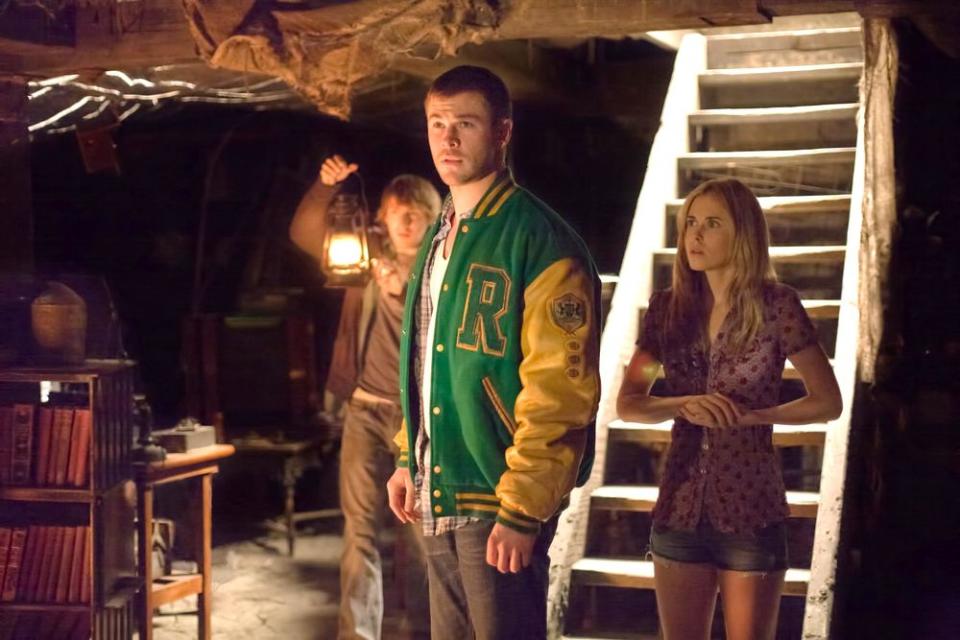
The Cabin in the Woods (2012)
In another simulation-esque twist, The Cabin in the Woods begins with a team of scientists making obscure comments about a ritual, and how a similar one recently failed in Stockholm. Cut to a group of five college students spending a weekend getaway at a deserted cabin in the woods. Unbeknown to the group, but known to the audience, the scientists are controlling aspects of the cabin and the students themselves, as it becomes clear that they’re part of some sort of experiment. After considerable death and mayhem, things take one final turn when the two surviving students, Dana and Marty (Kristen Connolly and Fran Kranz), descend an elevator that Marty found, taking them to the subterranean layer where the scientists reside. There, they learn that they are in fact part of an annual ritual that takes place all over the world, done to appease ancient evil deities who demand human sacrifice. The American ritual, we learn, must involve the death of five horror-film archetypes. As long as “the virgin” (Dana) dies last or survives while the others die, humanity will be saved. Dana refuses to kill Marty in order to complete the ritual, and the two concede that humanity doesn’t deserve to be saved, so they decide to instead smoke a joint and welcome their fate. It’s all very weird and ridiculous, but because we’re clued in somewhat from the beginning, and because the reveal serves as a very meta commentary on horror movie tropes, it all works.
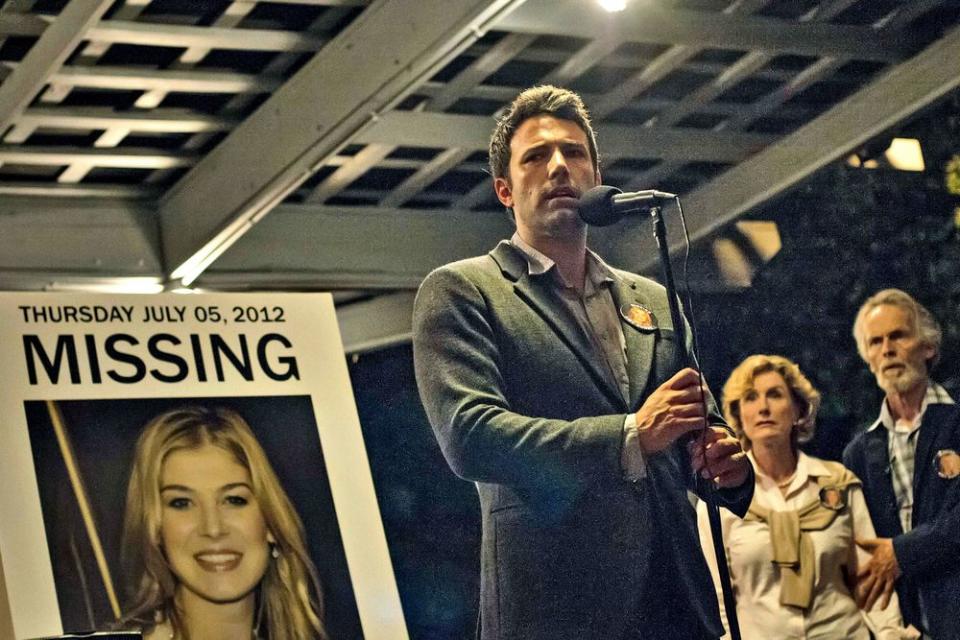
Gone Girl (2014)
This riveting thriller (and faithful adaptation of the Gillian Flynn novel of the same name) starts off with the disappearance of Amy Dunne (Rosamund Pike), who is presumed dead after a significant amount of her blood is found in her home. As the detectives probe further into the case, things go from bad to worse for her husband, Nick (Ben Affleck), as it’s revealed he was having an affair with one of his students, and Amy was pregnant at the time of her disappearance. Evidence continues to mount against Nick, as signs of financial struggles are uncovered, as is a very incriminating diary written by Amy which states that she feared for her safety before her disappearance. Things take a major turn midway through the film, when it’s revealed that everything is going perfectly according to plan for Amy, who staged her death (including faking the pregnancy) and set up her cheating husband. A bunch of crazy turns later, and Amy eventually goes back to Nick and reveals that she is pregnant, for real this time, and Nick stays with her for the child’s sake. For those of us who read the book, these twists came as no surprise. But, because Flynn adapted her own book for the screenplay, watching the events unfold on screen for the first time just as they do in the novel was still incredibly gratifying.
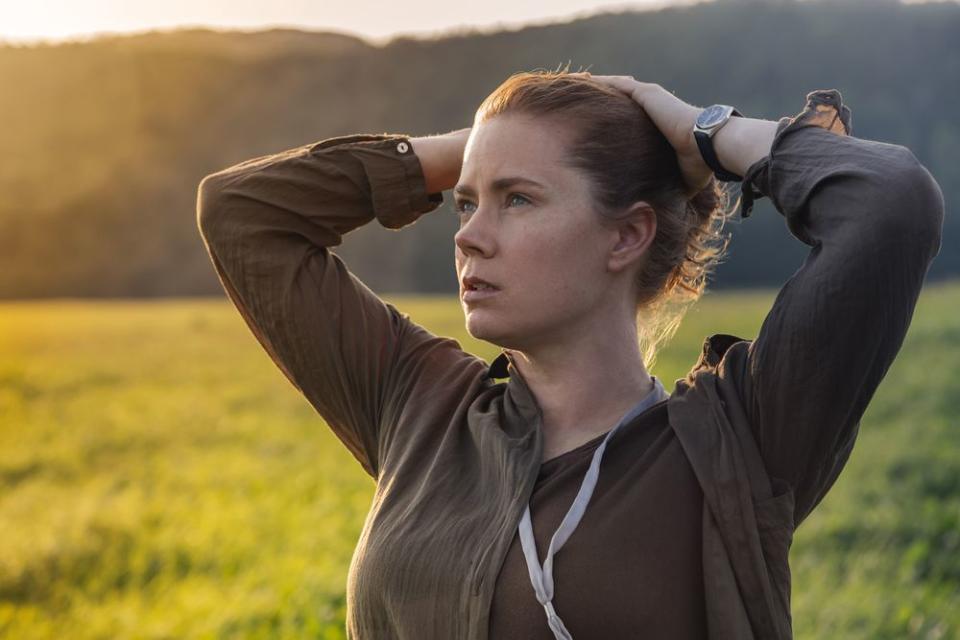
Arrival (2016)
When aliens arrive on earth, renowned linguist Louise Banks (Amy Adams) and physicist Ian Donnelly (Jeremy Renner) are recruited to attempt to communicate with the creatures and ameliorate any potential issues. The aliens communicate using a variety of symbols, and as Louise starts learning more of their language, she starts having flashback visions of her young daughter (who, we learned at the beginning of the film, died from a terminal illness). Eventually Banks and Donnelly work out that the aliens are there to help us, because in 3,000 years they will need our help in return. Turns out, their language is really more of a tool that changes the perception of time, causing them to experience “flashbacks” of future events. Because Louise has learned some of that language, she too has experienced these flashbacks. And therefore, in what is perhaps the most tragic twist on this list, we learn that all the “flashbacks” involving her daughter and her death haven’t actually happened yet, but they will. The film ends with Donnelly and Banks ruminating on the future, and whether or not you would change things about your life if you knew how it was going to play out. Banks concludes, “Despite knowing the journey, and where it leads, I embrace it. And I welcome every moment of it.” The twist ties together the film’s theme while walloping its audience with a beautiful, emotional gut-punch. You really couldn’t ask for more.
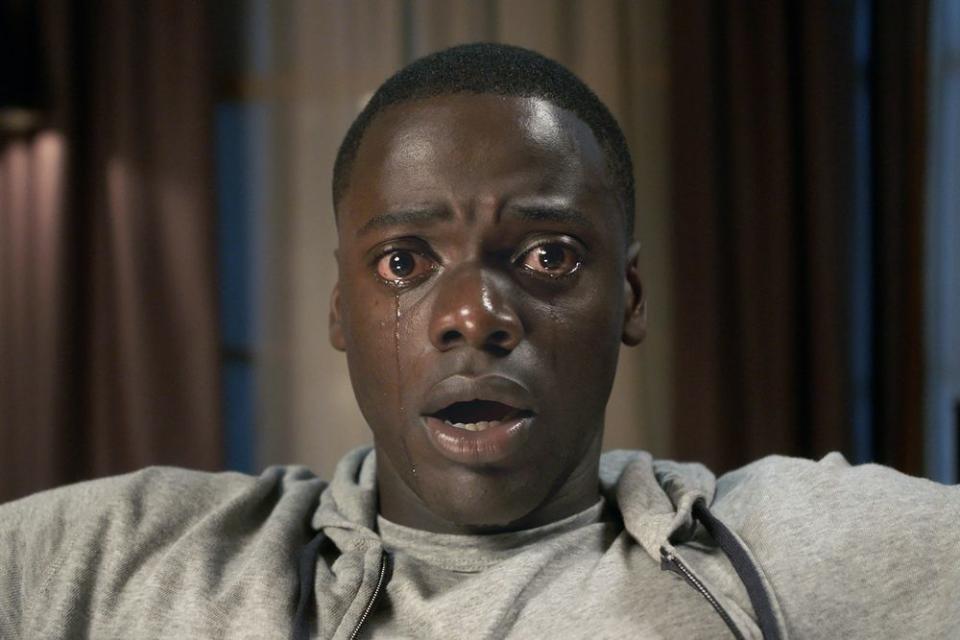
Get Out (2017)
In Jordan Peele’s directorial debut, Daniel Kaluuya is a black photographer named Chris, who agrees to go home with his white girlfriend, Rose Armitage (Allison Williams), to meet her family one weekend. Weird things start happening from the start, with Rose’s mom trying to hypnotize Chris and the family’s black staff acting very strangely around him. Things come to a head when a bunch of rich white people come over to the Armitage estate for an annual get-together, where they hold some sort of auction involving a picture of Chris. He learns the hard way that he is the latest black person “recruited” by the family so they and their rich friends can achieve a sort of immortality: They implant their brains into the black hosts, who, through hypnosis, have their consciences kept dormant in the so-called Sunken Place. The black staff members are actually revealed to be Rose’s grandma and grandfather, having successfully completed the operations in the past. Luckily, Chris manages to escape before becoming the latest victim, and kills the Armitage family in the process. With the twist, Peele completes his scathing social satire in a dark but satisfying way.
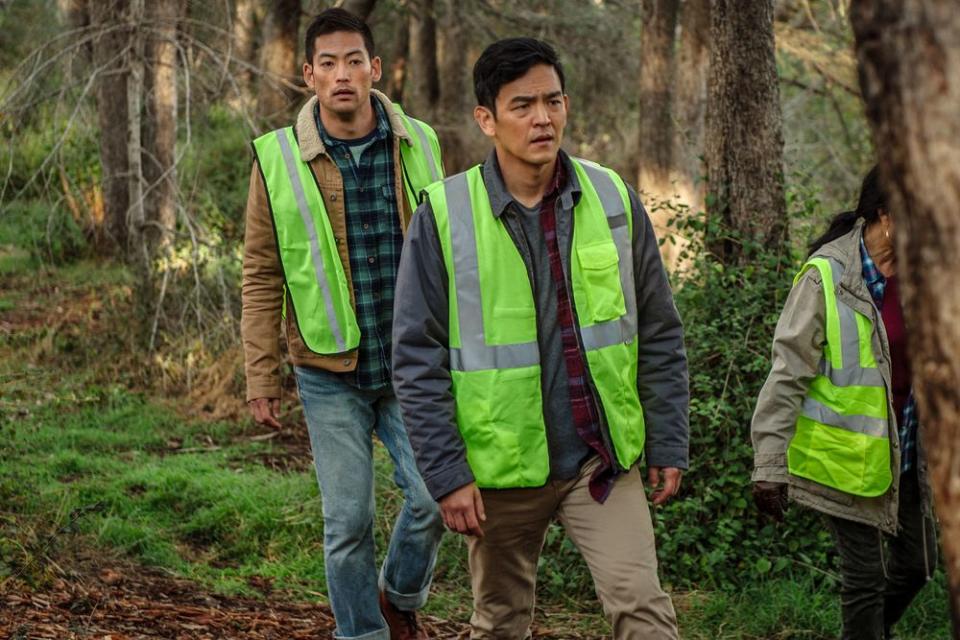
Searching (2018)
Told entirely through computer and phone screens, this innovative mystery follows David Kim (John Cho), a father searching for his missing 16-year-old daughter, Margot (Michelle La). It’s revealed early on that Margot had been chatting online with a woman using the alias fish_n_chips, but Detective Vick (Debra Messing) proves that the person’s alibi holds up and that she’s not involved. Lots of weird twists happen along the way and plenty of clues don’t quite add up, until it’s revealed that Vick’s son was actually fish_n_chips, and he was using the account to get close to Margot, whom he had a crush on. When he confronted Margot to tell her the truth, things got out of hand, and he accidentally pushed her over a cliff. Vick found out and took on the case so that she could cover it up for her son, which is a twist that’s both believable and tragic. After all, the film is essentially about the lengths parents go to to protect their children, for better or for worse. And, thanks to her dad’s obsessive detective work and some fortuitous rains, Margot is found alive (albeit in pretty bad shape) at the ravine.
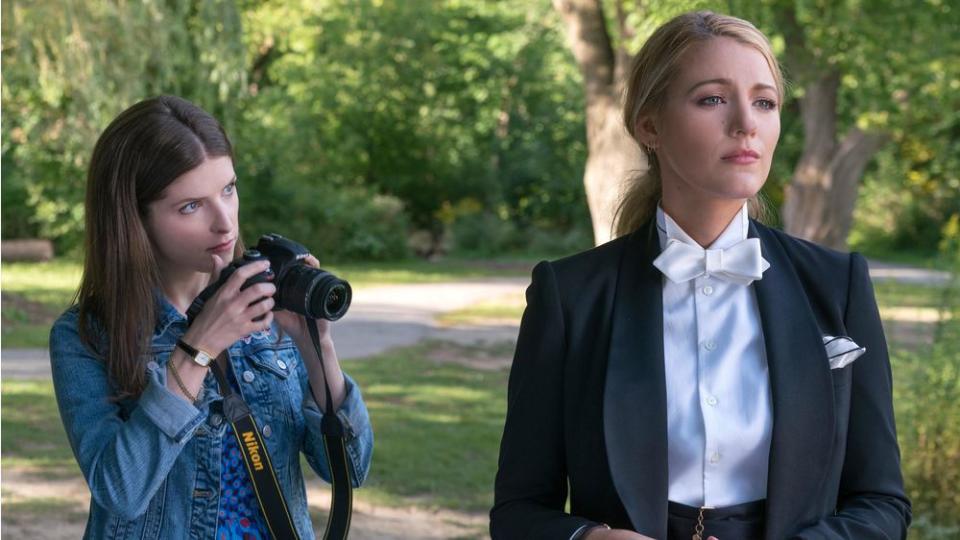
A Simple Favor (2018)
A Simple Favor takes so many turns that whiplash just barely begins to describe the feeling you have after watching it. Anna Kendrick is mommy vlogger Stephanie, who investigates when her new friend, Emily (Blake Lively), goes missing. Later, Emily’s body is seemingly found in a lake with a large amount of heroin found in her system, and it’s revealed that her husband, Sean (Henry Golding), had taken out a large life insurance policy on his wife before she went missing. Stephanie keeps digging (and begins a relationship with Sean), and discovers that Emily is actually a woman named Hope McLanden, who has an identical twin sister named Faith. The two disappeared after killing their abusive father in a house fire 16 years prior, and Hope started over as Emily, while Faith disappeared and became addicted to heroin. Faith later contacted Emily and attempted to blackmail her, the two met up, and Emily drowned her sister but claimed it was suicide and part of an insurance scam by her husband.
This is where things get truly bonkers: Emily is upset that her husband slept with Stephanie, and Stephanie is jealous that he seems so willing to take his wife back. The two start a 4D chess match, which begins with Stephanie agreeing to help Emily get away with everything by framing Sean. Stephanie goes back on her word, though, when she and Sean set up a fake argument (with police listening in) to try to trick Emily into incriminating herself. Emily has seen this coming, however, and disabled the microphones ahead of time. But wait, there’s more! Emily declares that her new plan is to kill Sean and Stephanie and make it look like a murder-suicide. She shoots Sean, and just as she’s about to shoot Stephanie, it’s revealed that Stephanie had actually been filming the whole thing for her mommy vlog. Emily runs and is hit by a car (yes, really), and gets arrested. A Simple Favor and its wild twists work because the film owns its outrageous, campy vibe from start to finish, and it never pretends to be anything it’s not.
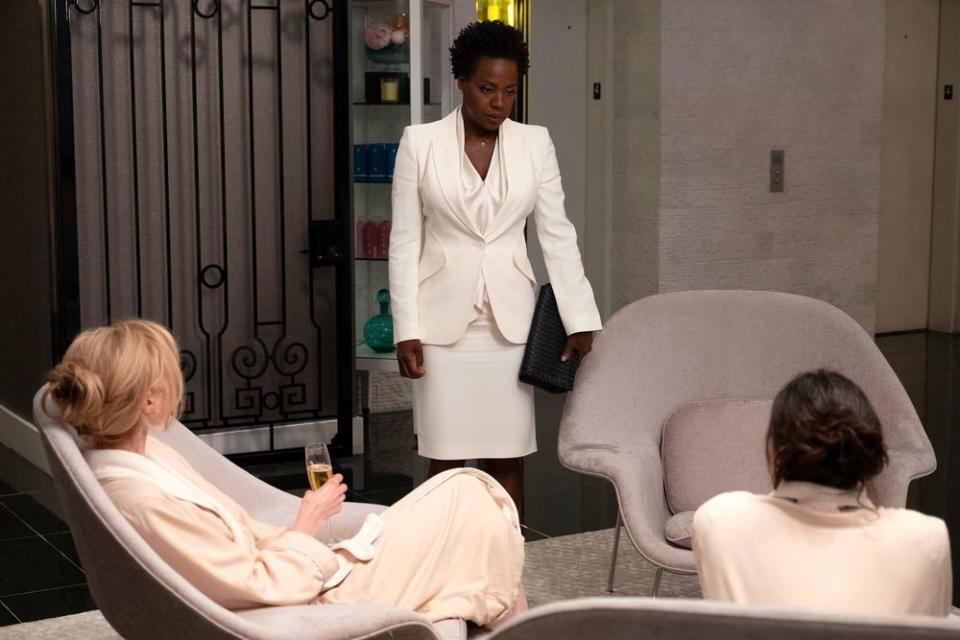
Widows (2018)
True to its name, Widows follows four Chicago women who attempt a $5 million heist in order to pay back a crime boss from whom the women’s husbands stole before being killed in a getaway attempt gone wrong. The widows are about to get away with it when their leader, Veronica (Viola Davis), returns to their hideout to find (gasp!) her supposedly dead husband, Harry (Liam Neeson), in the process of stealing their money. This surprise reveal packs a one-two-three punch, because not only is Harry alive, but another of the widows with a 4-month-old baby who turned down helping the women earlier in the film is actually Harry’s mistress, and the baby is his. And, just as Harry is taking the money, he decides he needs to kill Veronica to protect himself and his new family. A gunshot is heard, but we learn that Veronica got to Harry first, and he dies. Things seem pretty straightforward throughout much of the film up to this point, which is perhaps why the late-breaking twist is so effective — you just never see it coming.
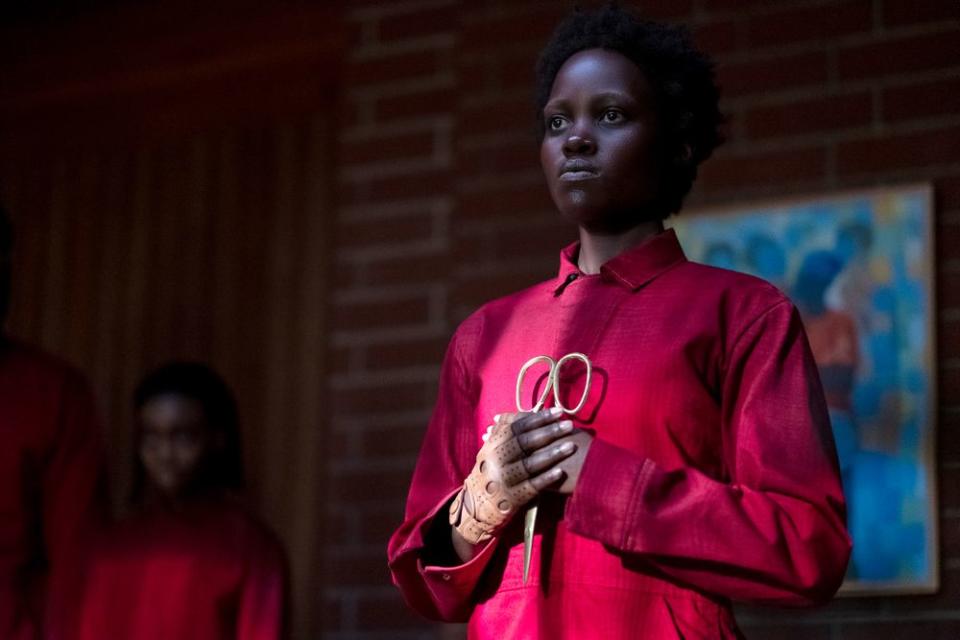
Us (2019)
Peele’s follow-up to Get Out opens with a young Adelaide (Madison Curry), who gets lost in a funhouse while vacationing with her parents in Santa Cruz, California. When her parents finally find her, she’s so traumatized that she can’t talk. Flash forward to the present day, and a now-grown Adelaide (Lupita Nyong’o) returns to Santa Cruz with her own family for a vacation. One night, a group of murderous, red-clad doppelgängers show up. Adelaide’s doppelgänger, Red, explains that everyone has a double, called a Tethered, whom they share a soul with. Led by Red, the Tethered are staging an uprising to untether themselves. In a final showdown between Red and Adelaide, it’s revealed that when a young Adelaide encountered a young Red in the funhouse all those years ago, Red knocked Adelaide unconscious and brought her down to the tunnels where the Tethered live, and took her place in the world up above. The result forces you to question your loyalty to Adelaide, and everything that happened in the film prior to the reveal.
Related content:

